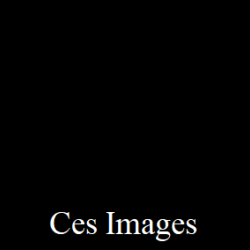The Picture is Shaking Slightly
05/03/2018
Author: Rana Zeid
Syrians waited about four decades before screaming out against Assad’s regime. After this outcry there can be no going back to silence. The people were fed up with murders, forced disappearances, dictatorship, political and social repression, and overwhelming psychological pressure on the individual. Thus they were not fully aware of what waiting would mean, or of what would follow it. Their will was somehow anesthetized, or they were only partially awake. They must have known for certain that the right moment, stolen from them, would not have come if they had rushed it. Their implicit, accumulated certainty of the fixed presence of the Syrian regime was equal to the excess with which they silently cursed it in their minds and souls, day after day. They also needed to be skeptical of all things fixed and ideologized. They needed time and patience, as well as rage, disobedience, and revolt, all at the same time. This immortal idol bent its head and fell, causing all of this death, noise, bitterness, displacement, freedom, and life.
Time no longer carries the same indications that it used to. It is impossible to use the same logic when measuring the way things were before the Syrian revolution (2011) and measuring what came after it. There is one remaining similarity, however, which is regrettably repetitive. Some of that which was repressed leaked from the past to the present, as if it was a closed hourglass overturning and repeating itself. This leakage is behind the fragmenting face of society and its conscious cognitive state. It shows that society has lost not only its way, but also its connection to the truths and reasons that led to the diverging and boring political knot that we find ourselves in on this day, in 2018.
There may be a hypothetical place where events take place today, an alternative to the actual country. If so, it is necessary to point out that Syria has moved to Facebook. Therefore, Syria itself disappears from the collective mind and becomes a place where Syrians either fight and bicker or unite in a set logic, all with repeated reference to the murderer whose massacres continue steadily. Syrian events and actions have almost become a tragedy and a comedy, but they have actually happened, and still continue to happen. They are taking place in the shadow of many people’s desire to see the revolutionary illusions of political change, which have affected the majority of Syrians, come to an end. This has yet to be achieved, because although the righteous ones did not become silent after their initial loud scream, and their desire for life did not cease, some did grow tired or succumb to the fatigue of the long journey.
In 2017, the British composer Roger Waters created a musical piece that responds to those who have hinted at the death of Palestinian literature, as though it is merely a formality linked to a political movement that fluctuates between being and non-being. Similarly, there are those who insist on ascribing the same fate to Syrian literary and artistic products, claiming that they are weak and in decay. The mind can follow the message that is implied here, understanding something that is difficult to say directly; the literature of lost causes is all doomed to the same fate, vanishing into oblivion. In this way, an unknown finger pressing gently on a hypothetical button, those artistic and literary works, which have so far held no value, will be erased in the eyes of people who resemble intellectual police more than critics of art and literature.
What is important to note for our purposes is that Waters was inspired by the Palestinian poet Mahmoud Darwish to examine a different sense of what it means to wait in his solo album, Is This The Life We Really Want. A founding member of the rock bandPink Floyd, Waters did not just recompose the words of Darwish's poem, Lesson from the Kama Sutra, and sing it. He took the meaning of waiting to a new place. He makes a connection between Darwish’s sense of waiting, a sense we may agree or disagree with, and which is derived from The Kama Sutra (the Indian "art of love," written in the fifth century AD”, and the wait for the final product of Waters' long meditation in time. He evoked a symbolic wait for others, the owners of the new place that received the refugees. This is a wait so that these passers across death can gather themselves, as we see in the video for a song from the album, Wait for Her. The woman, a Flamenco dancer, who appears in this video is the same woman who escapes by sea in the video for his song The Last Refuge. In both videos, one woman switches between two different situations. Sometimes she is deep within a state of human oppression, submerged in a dark place, gathering herself. She is accompanied by the memory of losing her small daughter when she fled by sea. In the other situation she prepares herself backstage before dancing. Waters wanted to express that those refugees who escaped from death have life, with all its inherent value, in their hearts. They may appear to be broken humans in poor condition, but their looks and their imbalanced state, which one can see at first glance, are not their ultimate truth. One should wait for them. Artistically, Waters wanted to somehow, create a path for the woman that contains the kindness and tenderness of waiting for a woman who is fleeing from devastating destruction in her country. He wanted to foreground her human magic and the shine that comes from her energy in motion and the extraordinary motion or act that she has carried out. Waters used Darwish's words to redefine the truth and present the image of refugees, broken and crumbling, under the influence of the media.
We know that Waters lost his father in World War II. There is no need to elaborate or explain his musical works or their symbolism. The Wall refutes the horrors of war and stands against society’s domination of individuals. His work speaks as Darwish’s did, insisting that incidents of this magnitude require a different approach. Moreover, understanding and developing Syrian creative work, establishing its connection with the Syrian person, and eventually bringing the catastrophic situation that has befallen him to an end, all require a special degree of awareness and perception. In this perception there would be no race to decide who is the most important Syrian writer now. We would not ask, who will win the Nobel Prize for Literature? Or who is the greatest, most creative, and most well-known Syrian artist? The artists, writers, and filmmakers of Syria may not enter into this competitive stampede with full awareness, but they are drawn into it by the desire of other Syrians to hysterically expose them to benchmarks of creative achievement. These are universal standards, the validity or usefulness of which for tracking the movement of Syrian art and literature, no one knows. It is as if the Syrian writer or artist is required to reach perfection. In this case, perfection unconsciously represents something like the death-sentence that follows this trial. This observation is very similar to another, hidden feeling that in the Syrian case, there is no perfection except death, pure death, and so death must be the culmination of everything.
Here we can revisit the act of escape, an act which reads as disaster on the faces of refugees, faces that constitute the ultimate image of war. As summarized in the voice and the movement of real conflict, the joint-image of the victim and the executioner together cannot but stimulate that flowing feeling which is held in the movement of each boat as it is about to reach the strange place. This is a fluctuating feeling, swinging between the reality of terrible loss and a sense of survival.
Refugees had to desire salvation before they could escape from their country. This is the only motive that can compel one to confront death. It is the desire for salvation, the need to be rid of Assad’s rule, that has made the Syrians stand together in the face of imminent death. Perhaps, in retrospect, those yearning for salvation would have changed the plan in order to lower the death toll. It is not useful, however, to blame, or to use the tools of logic to reflect on bombing, bullets, and what is generally taking place within the horrors of war. We cannot use logic to assess the loss of life that has resulted from inexperience in the art of confronting tyranny.
Our vision is not blurred, but the picture is shaking slightly!
"On a refugee boat there was a young Syrian man who was no older than 30. Right next to her there were two Syrian parents with a young daughter. The parents asked the man to take care of the girl if they were not lucky enough to survive. Their fears came true. They did not survive. When the young man reached the banks of refuge, he was asked by the Greek authorities if he was the girl’s father. He replied that he was". This story, which was told to me by another individual who was in the boat, might seem appropriate to a huge literary narrative. But really, with the confluence of time constraints influencing the story’s narration, the time of the Syrian writer and the time of the event itself, the question remains: should the writer who will tells such a story do so with an artistry that exceeds that of reality? Is the work of literature today to play an aesthetic role? To narrate of real events all while burdened by imagination, evasion, and the fear of Baathist policeman? Or should literature simply convey the excess of the narrator’s pain through the story? Perhaps the narrator or the writer merely has to be aware on an artistic level that in less than a day the young man has gone from being a single man to being a father. He merely has to be aware that within this short story, nothing that happens before or after the event could blur these imaginary pictures; neither the boat shaking nor the cries of the young girl, as she instinctively tries to find out what happened.
This story shows us that Syrians are now charged with somehow conveying a massive event of human beings subjected to pure power and destruction. So this is not excess in the meanings posed by cultural philosophy its reference. It is excess in the meaning that is spoken by reality. The figure of the Syrian writer or artist seems close to the figure of the man on the boat because of their shared nationality. His image and the image of those he narrates are the crux of this salvation in its human, moral, and radical meanings. The example above is not offered as a means of reexamining reality, but as a way to conceal reality in implicit silence rather. It is not meant to reveal things in a direct review, an act which would reproduce sentimental patterns of and imaginary individualism, as though real events are separated from this real human tension.
This realistic image may cause some literary critics to deny that their personal images are reflected upon it. Because literature and art seem to mirror reality, these critics try to forge a new, non-existent image, and to deny anything else, refusing the mental image or impression that does not exist in reality, and which is usually formed during the process of repression. The mechanisms of repression are denial and negation. These critics cannot negate reality directly, but they can, to some extent, negate any work of art that accurately presents reality. In any case, the power of death will succeed in giving shape to the Syrian intellectual who is suspicious of the other's thoughts. He will suspect deception and harm, so he will not be able to wait for others to catch their breath. In the midst of his aggression, he will defend the collapse of aesthetics, daily demolishing the rosy-glow.
Assad's regime has never ceased to attack one thing within us, the dream. The school teacher in Assad’s Syria was willing to let us fall under the weight of his persecution. We all did what we were asked to do, and anything that ensured the deification of our cherished commander was permissible. So we repeat Baathist slogans hundreds of times in the school yard and in the classroom. Each morning, schools must resound with the chanting voices of the leader and his party. As long as we are always suspected of committing a crime of which we are not aware, any feeling of freedom, any negligence or doubt about the integrity and stability of Assad's image, is the same as cheating in school. It is hard to believe that the attached photograph (March 25, 2011) is of a mature Syrian man who wrote on his hands, in ink: "Yes to freedom, no to violence". There is no way to know how long his hands were closed as he fled from security forces in Damascus, waiting for a moment to open them, screaming and dreaming, revolving around his isolation and emancipation from the last pains of his long silence. He seemed to be cheating on the test of loyalty to the dictator, a decades-long test. What is the crime that this demonstrator’s dream conveys by his dream, opening his palms in front of others?
With the Syrian revolution, the dream returned. For the first time, Syrians managed to escape bitter reality and forge their dream without fear or guilt. In conjunction with these social structures and developments, the creative being, should it have an opportunity to survive, can only solidify by way of dream and illusion. After all the changing political events and in light of the absence of a clear future for Syria, however, Syria is suspended between the dictatorship and the weapons that are controlled by Islamic forces. The Syrian should confront that other Syrian who is watching him. He should record his movement and his breath. That moral policeman and the destructive, frustrating violence that he practices against the dynamics of natural cultural acts are not to be underestimated.
In order to know where we have arrived in terms of salvation, we must remember the fate of anyone who tried to come out in public in Syria with words or creative work in which there was any criticism of the Assad regime. Today, after tyranny was removed from the censorship of creative work, some believe that creative acts have been liberated from any censorship or authority. Many even feel that they have been liberated from the pressure of the only true supreme authority: the value given to the creative work in its reception. Currently, the audience for Syrian work is primarily western, particularly with the influx of Syrian intellectuals to Europe. But honestly, who among us can put their finger on the feelings of the other as he watches or reads Syrian creative work? Of course, violence continues to be featured in most creative works, in parallel with personal and public tragedies, wherein there is no way to be freed from the wounds of the past. We still have not reached that moment that signals us to extend ourselves outward towards those without a Syrian character. Firstly, this is because most of us have just begin to open our suitcases after long travels, and secondly this is because creative work matures only when there can be a sorting process, and this depends on accumulation.
In order to go back to unveiling the horizon that would allow us to freely display Syrian work in the West, we must remember what it would have been like if these things were whispered under Assad's rule. Even this capacity for different intellectuals to mingle and have contact was absent, because any cultural gathering was met with accusations and criminalization. How could a dialogue about cultural production have existed among Syrians? They were living in a country where political and national identities were not open for debate. This was not only true for intellectuals, but for the entire citizenry. The exit from the first circle of creation consists in establishing oneself in the conscience of other. This usually happens after standing for a long time in front of the mirror, attempting to see and observe the self with a non-seductive eye. In our Syrian cultural situation, however, when we look in the mirror we find an immortal policeman standing behind us.








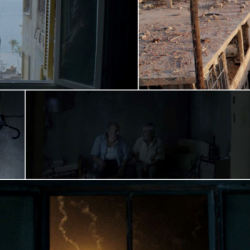
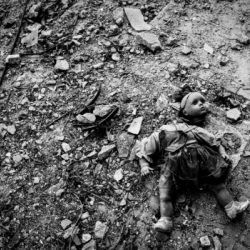
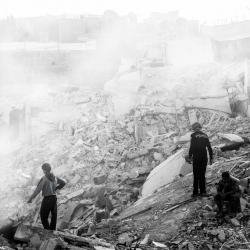

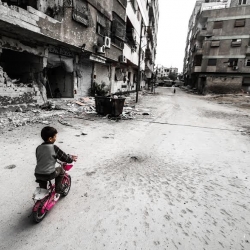
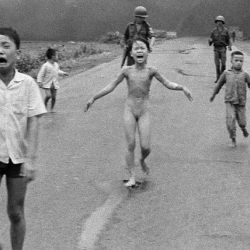
.jpg)
